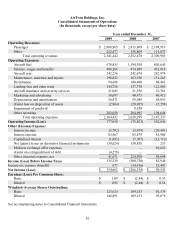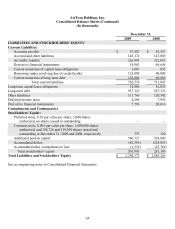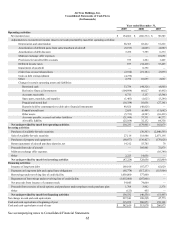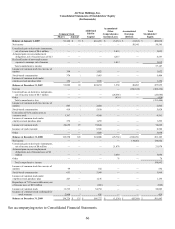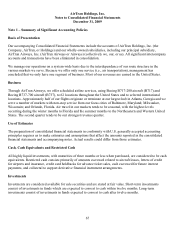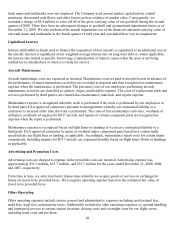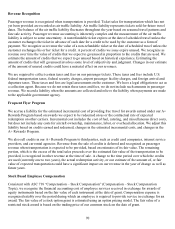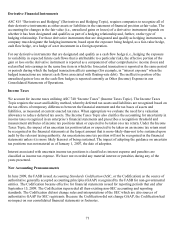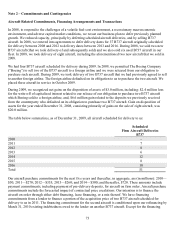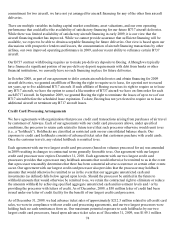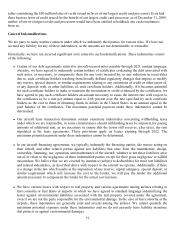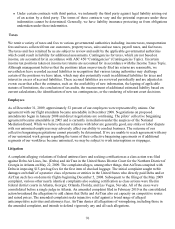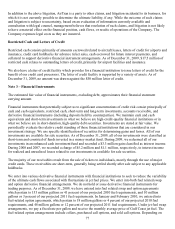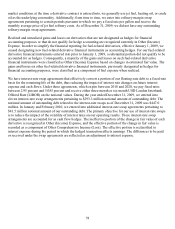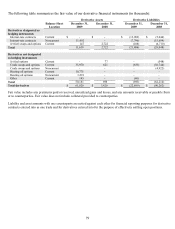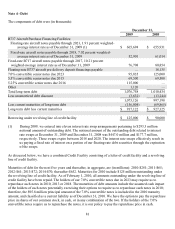Airtran 2009 Annual Report Download - page 81
Download and view the complete annual report
Please find page 81 of the 2009 Airtran annual report below. You can navigate through the pages in the report by either clicking on the pages listed below, or by using the keyword search tool below to find specific information within the annual report.72
On June 30, 2009, we adopted ASC 855-10-50 “Subsequent Events - Disclosure” (Subsequent Events Topic),
which established general standards of accounting for and disclosure of events that occur after the balance sheet
date but before the financial statements are issued.The Subsequent Events Topic defines two types of
subsequent events. The effects of events or transactions that provide additional evidence about conditions that
existed at the balance sheet date, including the estimates inherent in the process of preparing financial
statements, are recognized in the financial statements. The effects of events that provide evidence about
conditions that did not exist at the date of the balance sheet but arose after that date are not recognized in the
financial statements. We have reviewed subsequent events through February 11, 2010 (the date of the issuance
of the accompanying condensed consolidated financial statements).
In October 2009, the FASB issued an Accounting Standards Update (ASU No. 2009-13) pertaining to multiple-
deliverable revenue arrangements. The new guidance will affect accounting and reporting for companies that
enter into multiple-deliverable revenue arrangements with their customers when those arrangements are within
the scope of ASC 605-25 “Revenue Recognition - Multiple-Element Arrangements”. The new guidance will
eliminate the residual method of allocation and require that arrangement consideration be allocated at the
inception of the arrangement to all deliverables using the relative selling price method. The new guidance will
be effective prospectively for revenue arrangements entered into or materially modified in fiscal years
beginning on or after June 15, 2010. Early adoption is permitted and the guidance may be applied retroactively.
We are currently evaluating the impact that ASU No. 2009-13 will have on our consolidated financial position,
results of operations, and cash flows.
In December 2009, the FASB issued ASU No. 2009-17, Improvements to Financial Reporting by Enterprises
Involved with Variable Interest Entities, which incorporates into the FASB Codification amendments to FASB
Interpretation No. 46(R), Consolidation of Variable Interest Entities, made by Statement of Financial
Accounting Standard No. 167, Accounting for Variable Interest Entities, to require that a comprehensive
qualitative analysis be performed to determine whether a holder of variable interests in a variable interest entity
also has a controlling financial interest in that entity. In addition, the amendments require that the same type of
analysis be applied to entities that were previously designated as qualified special-purpose entities. The
amendments are effective as of the start of the first annual reporting period beginning after November 15, 2009,
for interim periods within the first annual reporting period, and for all subsequent annual and interim reporting
periods. We do not expect the adoption of ASU No. 2009-17 to have a material impact on our consolidated
financial position, results of operations, and cash flows.


